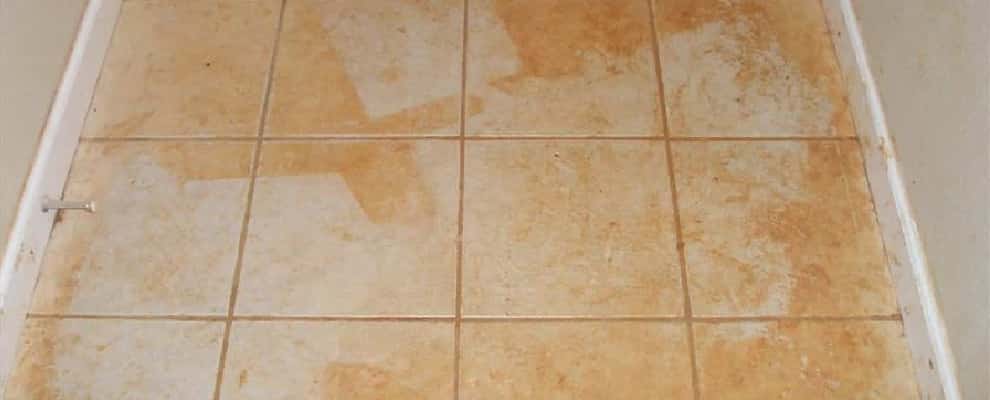How To Remove Stubborn Stains From Bathroom Tiles?
Do you know How To Remove Stubborn Stains From Bathroom Tiles? Yes, we know you are tired of looking at those stubborn stains on your bathroom tiles. No matter how much you clean, they just won’t seem to go away. Well, fret not! In this article, we will guide you on how to effectively remove those pesky stains and restore shine to your bathroom tiles. With a few simple techniques and household ingredients, you’ll have your tiles looking as good as new in no time.

1. Introduction
Bathroom tiles are prone to accumulating various stains over time, ranging from soap scum and hard water stains to mold and mildew. These stains not only make your tiles look unsightly but can also harbor bacteria and affect the overall hygiene of your bathroom. By following the tips and techniques outlined in this article, you’ll be equipped with the knowledge to effectively remove stubborn stains and maintain the cleanliness of your bathroom tiles.
2. Understanding the Types of Stains
Before diving into the cleaning process, it’s important to identify the type of stain you’re dealing with. Different stains require different approaches for effective removal. The most common types of stains on bathroom tiles include soap scum, hard water stains, mold, and mildew. Each of these stains has its own characteristics and requires specific cleaning methods.
3. Preparing the Cleaning Solutions
To tackle stubborn stains on bathroom tiles, you’ll need some simple and effective cleaning solutions. Here are a few recipes using household ingredients:
- Vinegar and Water Solution: Mix equal parts of white vinegar and water in a spray bottle. This solution is effective against soap scum and hard water stains.
- Baking Soda Paste: Create a paste by mixing baking soda with water. This paste works wonders for removing tough stains and grime.
- Bleach Solution: Dilute bleach with water in a well-ventilated area. Use this solution for combating mold and mildew.
4. Removing Stains from Bathroom Tiles
4.1. General Stain Removal Techniques
Before applying specific stain removal techniques, it’s important to perform some general cleaning steps. Start by removing any loose dirt or debris from the tiles. Then, use a mild detergent and warm water to clean the surface. This step will help prepare the tiles for targeted stain removal.
4.2. Removing Soap Scum
Soap scum can accumulate on bathroom tiles and leave behind a dull residue. To remove soap scum, spray the vinegar and water solution onto the affected areas. Let it sit for a few minutes, then scrub gently with a non-abrasive brush or sponge. Rinse the tiles thoroughly with water to reveal a clean surface.
4.3. Tackling Hard Water Stains
Hard water stains can be quite stubborn and require a stronger cleaning solution. Apply the vinegar and water solution to the affected areas and let it sit for a longer period, around 15-20 minutes. Scrub the stains using a brush or sponge, and rinse the tiles thoroughly. For tougher stains, make a paste using baking soda and water, apply it to the stains, and scrub gently.
4.4. Dealing with Mold and Mildew
Mold and mildew are common problems in bathrooms with high humidity levels. To remove these unsightly stains, create a bleach solution by diluting bleach with water. Apply the solution to the affected areas and let it sit for a few minutes. Scrub the stains using a brush or sponge, and ensure proper ventilation while working with bleach. Rinse the tiles thoroughly to remove any residue.
5. Preventing Future Stains
Once you’ve successfully removed the stubborn stains from your bathroom tiles, it’s important to take preventive measures to avoid future staining. Regular cleaning and maintenance will help keep your tiles in pristine condition. Here are a few tips to prevent future stains:
- Wipe down the tiles after each use to remove any soap residue or water droplets.
- Use a squeegee to remove excess water from the tiles after showering.
- Keep the bathroom well-ventilated to prevent mold and mildew growth.
- Apply a tile sealer or protective coating to create a barrier against stains.
6. Conclusion: How To Remove Stubborn Stains From Bathroom Tiles?
How To Remove Stubborn Stains From Bathroom Tiles? Removing stubborn stains from bathroom tiles may seem like a daunting task, but with the right techniques and cleaning solutions, it can be easily accomplished. By following the steps outlined in this article, you’ll be able to restore the beauty of your bathroom tiles and maintain a clean and hygienic environment. Remember to identify the type of stain, choose the appropriate bathroom tile and grout cleaning solution, and take preventive measures to avoid future staining.
Frequently Asked Questions (FAQs)
No, vinegar is effective against soap scum and hard water stains, but it may not be as effective for mold and mildew. For mold and mildew removal, it’s recommended to use a bleach solution.
Abrasive cleaners should be used with caution, as they can scratch or damage the surface of the tiles. It’s best to opt for non-abrasive cleaning methods and tools to preserve the integrity of the tiles.
Regular cleaning is key to preventing stains. It’s recommended to clean your bathroom tiles at least once a week to maintain their appearance and hygiene.
Yes, lemon juice can be used as an alternative to vinegar for removing stains. Its acidic properties make it effective against soap scum and hard water stains.
Published on: June 9, 2023
Last updated on: June 21, 2023
